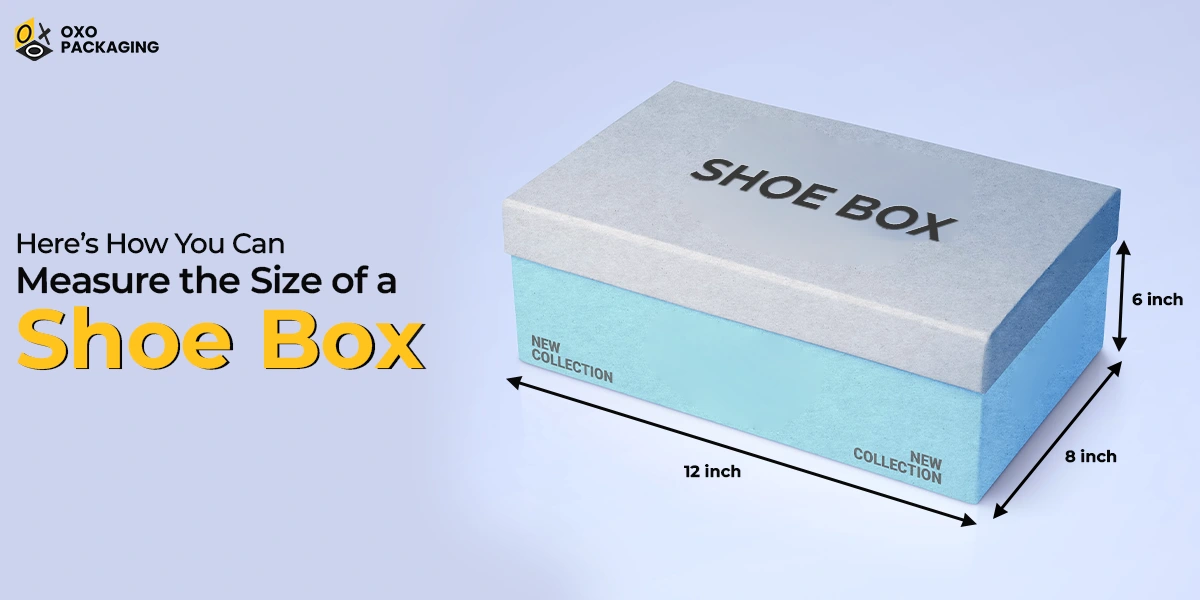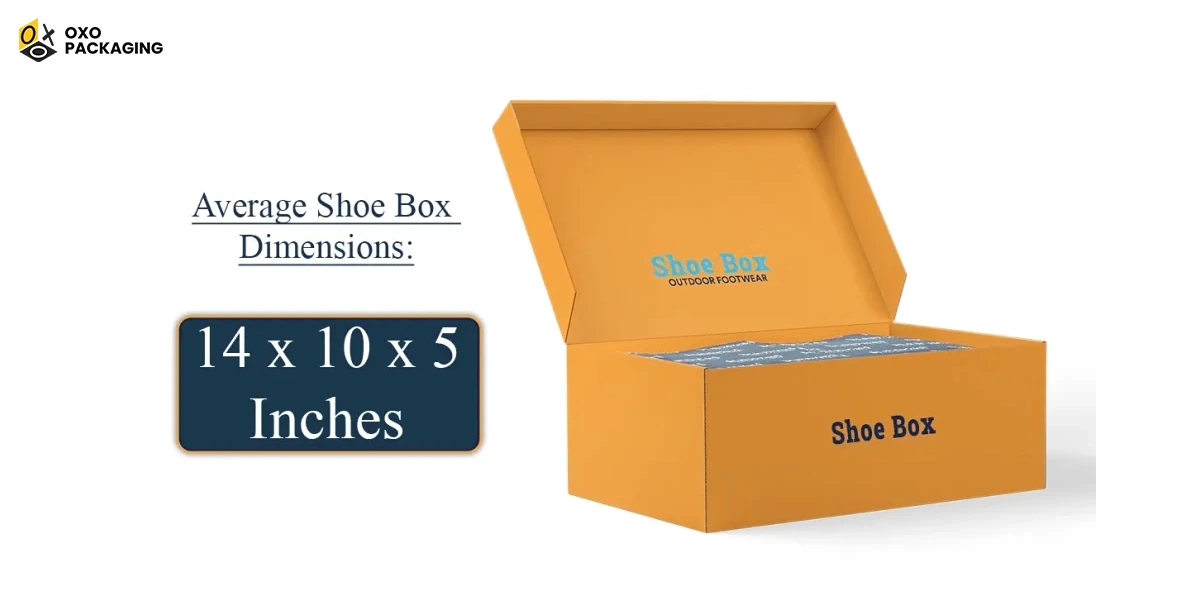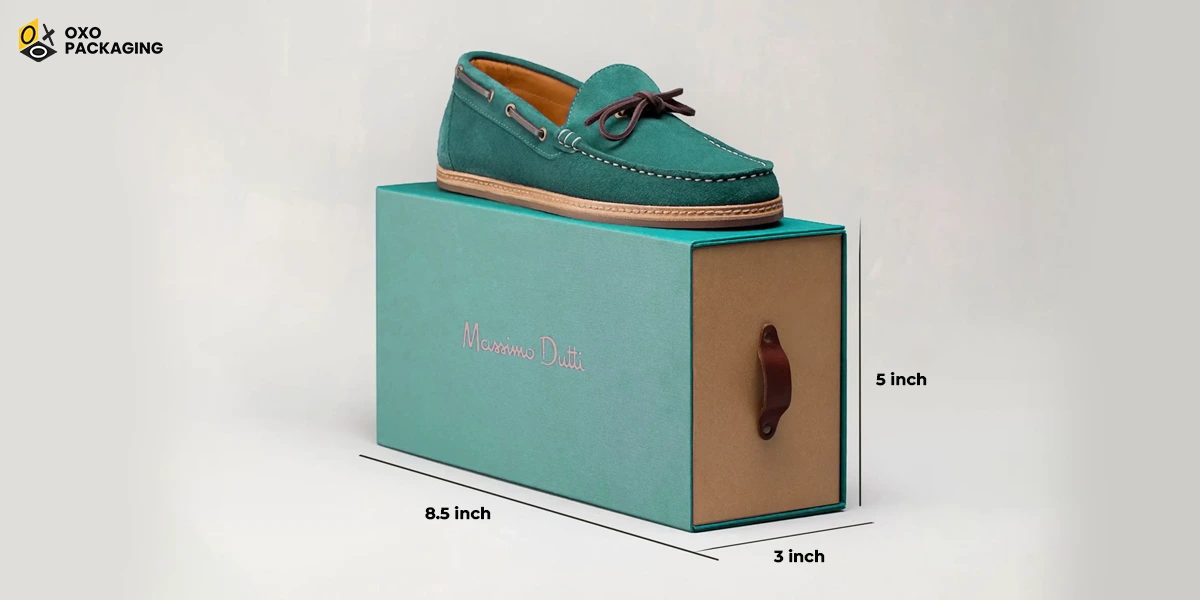Here’s How You Can Measure the Size of a Shoe Box!
Waqas Khan Pitafi 2025-08-13 12:01:54

Planning to start a shoe brand? Well, it is a great idea to invest in the footwear business because it has the potential to grow due to the never-ending demand for shoes. You need to make careful considerations to run a successful shoe business, such as determining the right size of shoe box packaging to ensure a snug fit.
Packaging is one of the most important factors of every product-based business. The shoe business highly depends on it due to the variety of different sizes and styles of shoes. Whether you are in need of a regular shoe box size or something to keep your luxury shoes safe, customizing them will boost your brand's visibility. Read this blog to learn how to measure the size of a shoe box!
Significance of Measuring the Size of a Shoe Box
The global Footwear market is expected to witness a revenue of US$505.7bn in 2025. It shows the higher demand for footwear and packaging. This is why the right size of shoe packaging boxes is as important as the safety of your products. Because product safety and the right-sized packaging go hand in hand. The incorrect size of shoe packaging results in product damage.
For example, too large a box for shoes can result in misplaced shoes during shipping. Likewise, too-small box packaging can cause shoe breakage and scratches. So, shoe packaging should be in the correct size that resonates with the shoe number and size.
Secondly, people perceive your products with their packaging. Presentation of your products matters most to capture customers' attention and improve their engagement with your products. Design your boxes to leave a lasting impression on customers and to stand apart from the competition in the market. It also depends on which type of shoe you sell. Like, if you sell luxury shoes, the packaging size must be precise, and it should be customized with the right styles for user convenience.
Types of Shoe Boxes
There are different types of shoe boxes available in the market based on the gender as well as the type of shoes being packed. Every shoe has a different size, style, and even weight; these are the reasons brands have to carefully pick the right material and size for the box. Let’s have a look at the different types you can see in the market:
-
Men
Men's shoe boxes are usually bigger than women's because of the shoe size and the weight of the shoes. There are different categories of shoes for men, according to which the size and shape of the box vary. Most shoes for men are heavyweight and thus need a durable packaging material.
-
Women
Women's shoe boxes are lighter and smaller than those of men, and we can see that in our day-to-day lives. However, this does not mean that brands are packing all types of women's shoes in the same boxes. Luxury boxes of women's shoes are heavier and larger than those of men. It’s all about the nature of the shoes.
-
Children
Children's shoe boxes are smaller than both men's and women's because they have tiny feet. Usually, these boxes are made for infants to kids up to 13 years of age. So far, these boxes have a lot of variety in both size and shape. Baby shoe boxes can be less than 5 inches in length, while a shoe box for a teenager can be around 10 inches or more.
-
Luxury
Usually, luxury shoe boxes are packed in different types of packaging than casual ones because of their delicacy. Heels are packed in rigid boxes and have different linings and fillers to keep them safe from bumps and jerks. Similarly, good leather shoes for men are packed in luxurious boxes for better protection.
-
Casual
You might have seen casual slippers packed in plastic bags or even light Kraft boxes. The reason is that they don’t need much protection because, at times, they are made of rubber. Big retailers prefer packing these casual shoes in very thin boxes as opposed to luxury shoes.
-
Winter
Winter boots are heavier than summer ones and thus need more protection. Be it long boots that reach our kneecap or just a shoe that covers our ankles, brands always pack them in heavy-duty boxes. This is the reason you see rigid packaging for the winter collection of almost every brand.
How to Know the Average Shoe Dimensions?

Typical shoebox sizes can vary depending on the size and shape of your shoes. You might have some questions in mind about the average dimensions of a shoe box. The shoe size is generally measured using the L x W x H (length x width x height). So, we have explained each of your valid concerns below:
How to Measure the Standard Shoe Box Size for Men?
The style and shape of men’s shoes are different from women's. This is why the size of a shoe box for women's shoe packaging also differs. However, the material of the boxes could be common, corrugated cardboard. You can measure them in inches or centimetres.
Generally, the standard shoe box dimensions for men are 14” x 10” x 5”. While in centimetres, these measurements are 35 x 25 x 13. A point to remember is that you need to leave a little space margin in the shoe boxes so that your shoes have space to breathe and do not get creases due to the too-tight box.
What is the Standard Shoe Box Size for Women?

The corrugated cardboard shoe boxes for women’s shoes have different dimensions from men’s shoe packaging. Women generally have smaller foot sizes than men. So, the standard shoe box size for women is around 13” x 7.5” x 4”, which is 33 x 19 x 10 in centimetres.
The embellishments and styles of women's shoes also matter when it comes to taking the right measurements for the shoes. For example, women’s shoes with pencil heels may occupy more space than flat shoes. So you may have to deviate from the standard shoe box measurements for heels and winter boots.
How to Determine the Standard Shoe Box Size for Kids?
Children’s shoe box dimensions have more variety because they may have different sizes from a few months old to teenagers. Most children's shoe packaging boxes are designed with 9” x 6” x 3” dimensions, which is equivalent to 22 x 15 x 8 centimeters.
However, it is quite impossible to give one standard size of a shoe box for children’s shoes because they grow every passing day. So, do their feet. This is why it’s best advised to order the boxes after you have received the sample shoes. This way, you can avoid any problems with the dimensions of the boxes.
|
Dimensions in Inches |
Dimensions in mm |
Dimensions in cm |
|
|
Men |
14 x 10 x 5 inches |
350 x 250 x 130mm |
350 x 250 x 130cm |
|
Women |
13 x 7.5 x 4 inches |
330 x 190 x 100mm |
330 x 190 x 100cm |
|
Children |
9 x 6 x 3 inches |
220 x 150 x 80mm |
220 x 150 x 80cm |
What is the Standard Shoe Box Size for Shipping Purposes?
Safe shoe shipping highly depends on the packaging. Generally, the right size of a shoe box for shipping should be made 20% larger than the accurate size of the shoe. It is important to get the accurate size of the shoes before customizing the shipping box. The boxes for long boots should be measured according to the long shoebox sizes for precision.
Corrugated shipping boxes are thicker than normal cardboard boxes. However, their sturdy construction ensures safe shoe delivery to your customers. These boxes should be at least 10 inches wide and 5 inches high when making packaging for men’s shoes. On the other hand, the size of a shoe box for ladies should be 7.5 inches broader and 4 inches higher.
International Shipping Standards for Shoe Box Size
When it comes to shipping shoes across borders, meeting international standards becomes essential for suppliers. You need to pay attention to the sizes and weight of custom packaging for your shoe boxes. Go for space-saving designs, so you don’t have to pay added shipping costs.
In some countries, wooden boxes require special permits. The best solution for such problems is avoiding such materials, rigidstock, and cardboard are ideal for creating show boxes that help you ship your shoes without the need for additional permits.
The Right Way to Customize Shoe Box Packaging
The right measurements of a shoebox can indicate how a brand focuses on every little detail of its products and customer service. You should consider the following factors to get the right shoe box packaging.
- Choose materials with higher thickness for shoes that need extra protection.
- Measure the right dimensions of your shoes, considering their shape and style.
- Determine the weight of the shoe to choose the right material for shoe packaging.
- Know the type of shoe, whether it is luxury, premium, or casual, to choose the type of box.
You should also know the type of shoes to customize the right size of a shoe box for them. For example, luxury sneakers should be packed in rigid boxes with foam or rubber inserts that offer a snug fit. These boxes would have higher shoe box size dimensions than standard because the foam or rubber inserts will also take up some space.
Likewise, high heels require boxes with higher depth or width that can enhance the presentation of heels while protecting them from getting damaged. Every type of shoe box must have an extra space inside that can make your shoes well-fitted in the box and let them occupy as much space as they need.
So, get your shoe box packaging customized according to the right size of a shoe box and deliver shoes in pristine condition to your customers. If you still have questions, you can contact us. We would love to assist you!
Creating boxes in perfect sizes that fit shoes and require minimal space is important for shipping shoes. You can measure the length, width, and height of these boxes to calculate the volume your boxes will occupy in cargo.
To perfectly pack your shoes while optimizing space, it’s ideal to go for a 20% larger box than the size of a shoe. This strategy also helps you customize your boxes for varying sizes of shoes with a breeze.
There’s no specific box size that every brand is using; however, a common size we can see is 12” x 12” x 12”. You can also use other dimensions as per the shoes you are about to pack.
Corrugated cardboard is best for packaging casual and lightweight shoes. Rigid boxes are used when you have to pack luxury shoes like heels, winter boots, leather shoes, and more.
By choosing custom shoe boxes, you can create a robust brand identity in the market, stand apart from the competition in the market and enhance shelf visibility.



